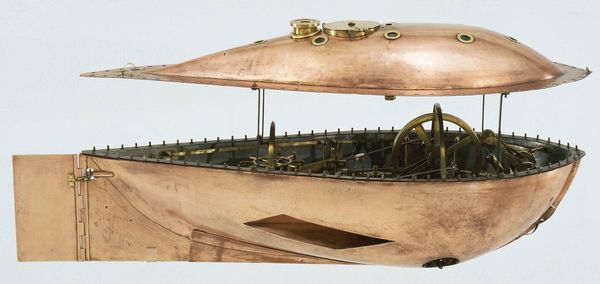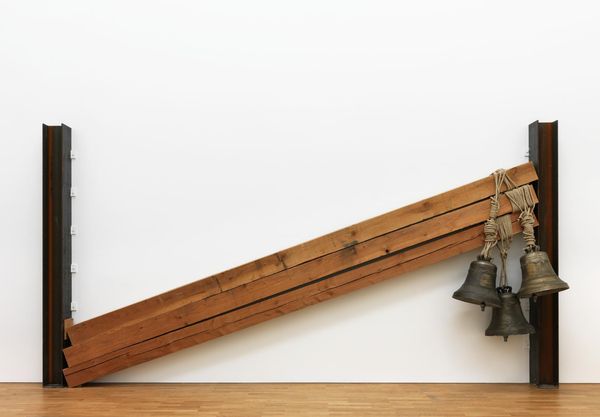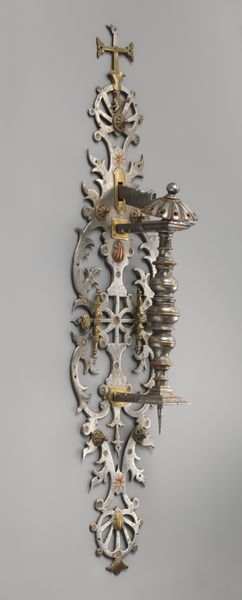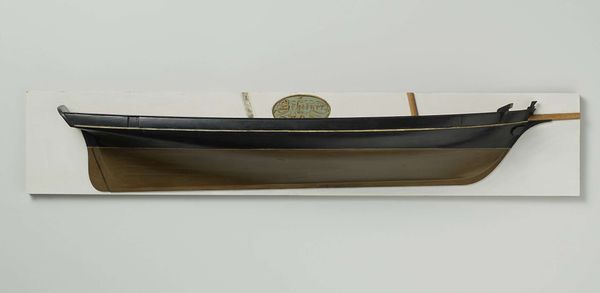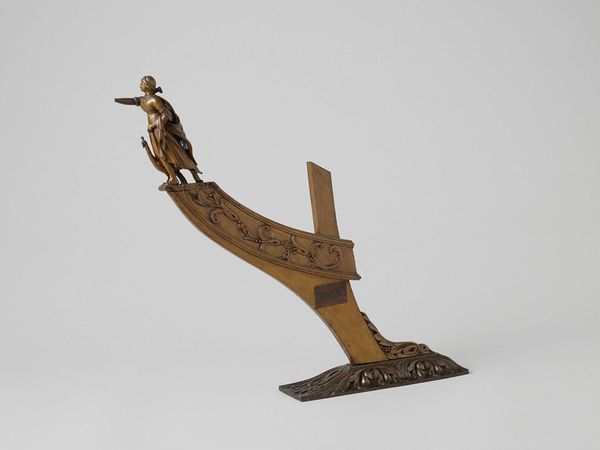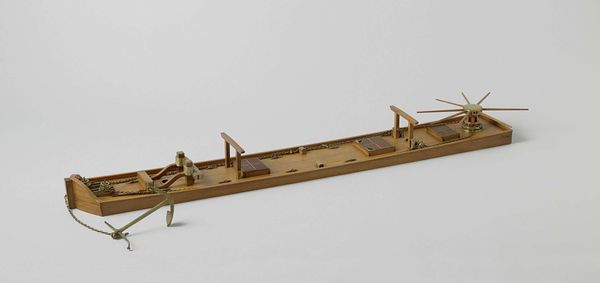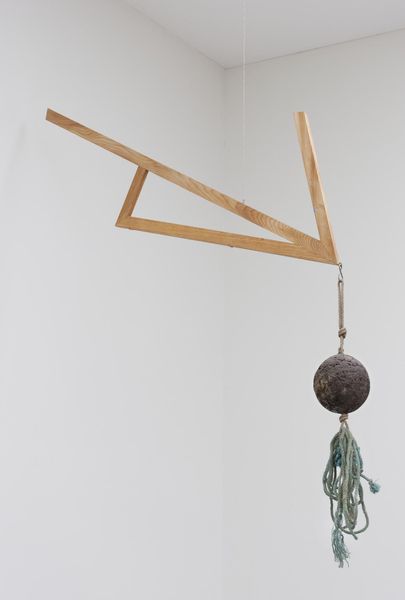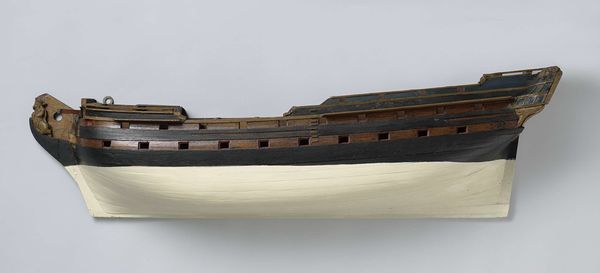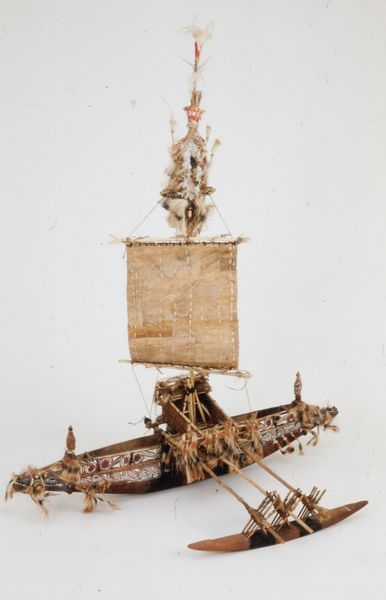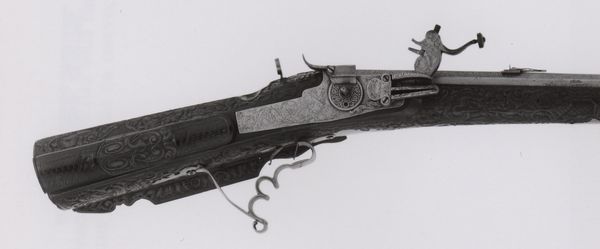
Dimensions: unconfirmed: 1500 x 1060 x 1555 mm
Copyright: © DACS, 2014 | CC-BY-NC-ND 4.0 DEED, Photo: Tate
Editor: Rebecca Horn’s *Concert for Anarchy* is quite the spectacle. It’s a deconstructed piano hanging from the ceiling, with its keys splayed outwards. What's striking is the violent gesture inflicted upon this refined instrument. How do you interpret this piece? Curator: I see a critical commentary on the means of artistic production and consumption. The piano, a symbol of high culture, is violated and transformed, drawing attention to the labor and material processes inherent in its destruction and subsequent reconstruction as art. Editor: So, it's less about the music and more about the act of making and unmaking? Curator: Precisely. Horn challenges the traditional hierarchy between art and craft by focusing on the materiality of the object and the social implications of its altered state. Consider where this object lived before its current state. Editor: It is fascinating to consider the implications of labor and materials here. Thanks for sharing your insight.
Comments
tate 3 months ago
⋮
http://www.tate.org.uk/art/artworks/horn-concert-for-anarchy-t07517
Join the conversation
Join millions of artists and users on Artera today and experience the ultimate creative platform.
tate 3 months ago
⋮
This upside-down grand piano occasionally comes to life in a noisy outburst. The instrument was used as a prop in Horn’s feature film Buster’s Bedroom 1990, set in a psychiatric clinic. Horn has described how, ‘having freed itself from the psychiatric clinic, [the piano] is now composing its own music’. The piano acts like a living thing: it gets upset and slowly regains its composure. This might mirror our own experience of being startled by the sculpture.Horn’s machines often appear to act like living creatures. She has compared their behaviours to those of human beings: ‘They react as we react. My machines are not washing machines or cars. They have a human quality and they must change. They get nervous and must stop sometimes. If a machine stops, it doesn’t mean it’s broken. It’s just tired. The tragic or melancholic aspect of machines is very important to me. I don’t want them to run forever. It’s part of their life that they stop and faint.’ Gallery label, May 2019

